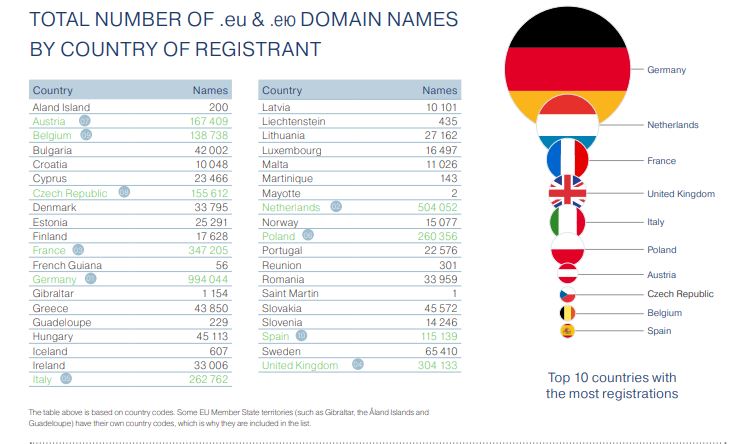As you are most certainly aware, the UK leaves the EU on 29 March 2019.
One unexpected consequence of Brexit is that UK businesses will not be entitled to own an .eu domain if the domain is registered to a UK address.
There are currently 304,133 UK businesses owning an .eu domain address who may be getting a nasty surprise
EURID produced the current league table of .eu domain names by country of registrant. The UK ranks in fourth position, with only Germany, Netherlands, and France owning more .eu domain names.
UK businesses are starting to get the message, with a 5.9% drop in the number of UK registered .eu domains from Q1 to Q2 2018. But there remain hundreds of thousands of domains still under UK control:

Owners of .eu addresses have received the following notification:
We are writing to inform you that EURid (European Registry for Internet Domains) has decided that anyone without an EU postal address will no longer be able to own a .eu domain name once the UK leaves the EU.
In brief, UK businesses will no longer have the right to own, renew or register .eu domain names. The right to own the .eu domain name will be revoked, and businesses will not be able to renew the domain.
- 30 March 2019 if the UK exits the EU with no deal
- 1 January 2021 if the UK exits the EU with a deal
Checklist: what to do if you own an .eu domain name following brexit
- If your company does have an EU postal address, then you can use it as your domain’s admin contact. To continue using the domain name you will need to update the admin details on your .eu domain name record.
- Or, your company can transfer ownership of the domain name to an EU subsidiary.
- If your business is not going to be able to retain ownership of the domain name, then you may wish to consider which of your competitors might like to purchase the domain name for competitive advantage. Consider your own other ownership options to protect your intellectual property.
- If your company does not have an EU postal address or a subsidiary, then this is the time to migrate your website to a generic top-level domain, like .com, or for UK companies, .co.uk.
- Finally, there are a number of top-level country domains, including France (.fr) and Italy (.it) that can only be registered by entities within the EU or EEA. Again, these will need to be owned by an entity within the EU.
You will need to create an international SEO plan which may require migrating content to new locations in your company’s digital new top-level domain.
Of course, migrating your website to a new domain name is not a decision to be taken lightly, and we have written technical guides to migrating multiple domain names to a single domain name, and an SEO cheat sheet.




